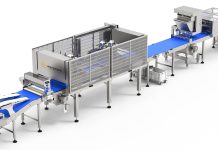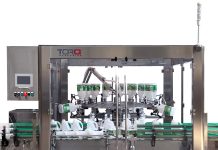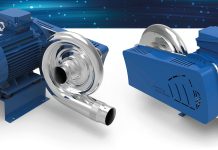Pressure in the headspace
During the corking the air (present) in the bottle neck is trapped under the cork, generating a pressure of about 1.5-2 bar in the headspace. Systems of filling under vacuum or with inert gas injection in the head space have been developed to reduce the problems linked to overpressure and the presence of oxygen in the air chamber of the bottle. Some wineries adopt the technique of the “corking flush with the level of the mouth“, i.e. complete filling of the bottle. Besides beings of scarce interest regards oxidation, this practice is extremely disadvantageous for the tightness of the bottle since the pressure achieved is very high (up to 5 kg/cm2) and causes immediate leakage when putting the bottle lying. The bottles filled in this way will not be able to bear a minimum increase in the temperature without consequences. It is worth reminding that the overpressure generated in the headspace with the insertion of the cork tends to decrease slowly due to the partial air discharge through cork. Therefore, for tightness it is important to keep the bottle standing for as long time as requested to allow a first elastic return of the cork and to put it lying only when the cork can ensure perfect tightness
Role of the bottling lin
The good tightness of the cork is strongly prejudiced if a film of liquid remains between the cork and the glass; the causes for this film of liquid to remain can be:
- Improper drying after the washing of the bottle.
- Formation o condensation due to the difference in temperature between glass and wine.
- Filling flow oriented in such a way that it creates a turbulence in the wine with consequent foaming.
- Too high filling level.
Wine levelling process through “gas injection levelling device”. If we take into consideration the cork hopper and chutes, the following factors would favour good quality corking:
- Soft movement of the mechanical an pneumatic systems.
- No asperities or cutting parts.
- Compatibility between the diameter of the chutes and the size of the corks.
- Good conditions of the movable parts.
As to the corker, its speed should generate a slow compression and a rapid insertion, the plunger must allow a precise positioning of the cork and, at the moment of the insertion, it must be well centred and in a precise vertical position and not show any breaches or flaws. The ideal insertion of the cork is flush with the mouth; anyway, some experts prefer to sink it a bit to compensate the slight rise due to the natural elasticity of the cork: in this case the tolerance is 0.5 mm. A periodical control of the compression jaws is required to guarantee:
- Maintenance of the cylindrical shape of the cork during the compression.
- Regular compression diameter.
- Good coupling of the sliding surfaces of the jaws.
- No breaches on the contact edge of the jaws and no irregularities on their lateral surface to avoid pinching the cork.
Experimental tests of thermal dilatation of the wine
At Istituto di Enologia e Ingegneria Agro- Alimentare dell’Università Cattolica (Piacenza) some experimental tests of thermal dilatation of red wine contained in transparent Bordeaux bottles with filling level at 20°C, indicated on the bottom of the bottle, corresponding to 0 mm from the mouth. The aim was to verify the behaviour of the single-piece cork at extreme temperature and storage time conditions. Two bottles (bottle 1 and bottle 2) at two different filling levels underwent two different tests performed as follows:
- TEST A: filling at 70 mm from the mouth, corking with single-piece corks 24×44 mm and storage of the bottles at 40°C, 50°C and 60°C.
- TEST B: filling at a value different from the one given for the 20°C temperature and arbitrarily fixed at 60 mm from the mouth, corking with single-piece corks 24×44 mm and storage of he bottles at 40°C, 50°C and 60°C, maintaining bottle 1 standing and bottle 2 lying.
For both tests the experiment was performed according to the following procedure:
- Measurement of the profile of the bottle neck and calculation of the flaring;
- Filling of the bottle with red wine and measurement of the level reached by the free surface of the wine at 20°C;
- Measurement of the diameter of the june 2007 21 bottleneck in the zone between the free surface of the wine and 45 mm depth;
- Corking of the bottle with a 24×44 mm single-piece cork;
- Measurement of the depth reached by said cork with respect to the mouth;
- Measurement of the height of the headspace; g. Calculation of the empty volume between the wine and the cork.
All measurements have been executed with a centesimal precision digital gauge.





